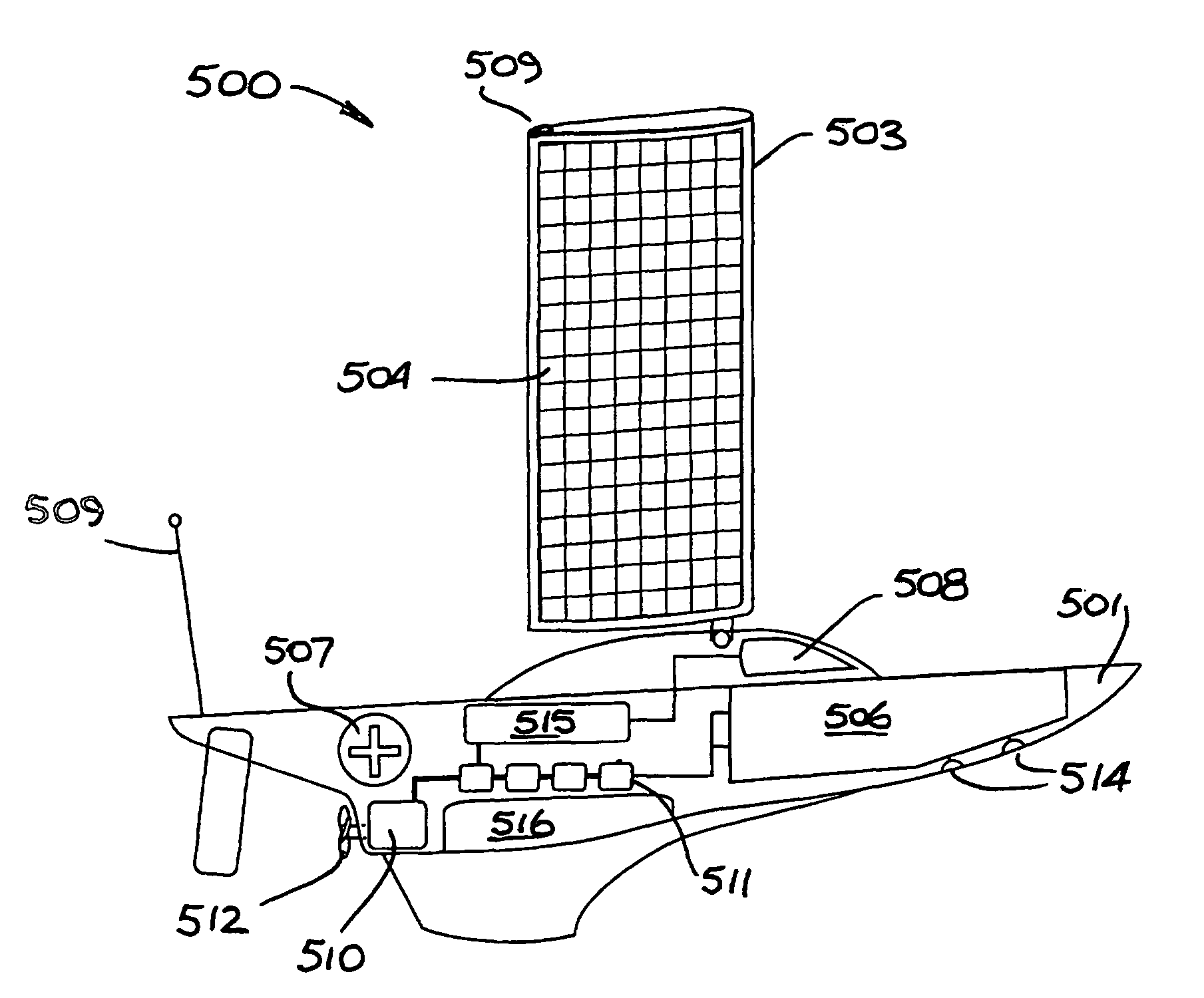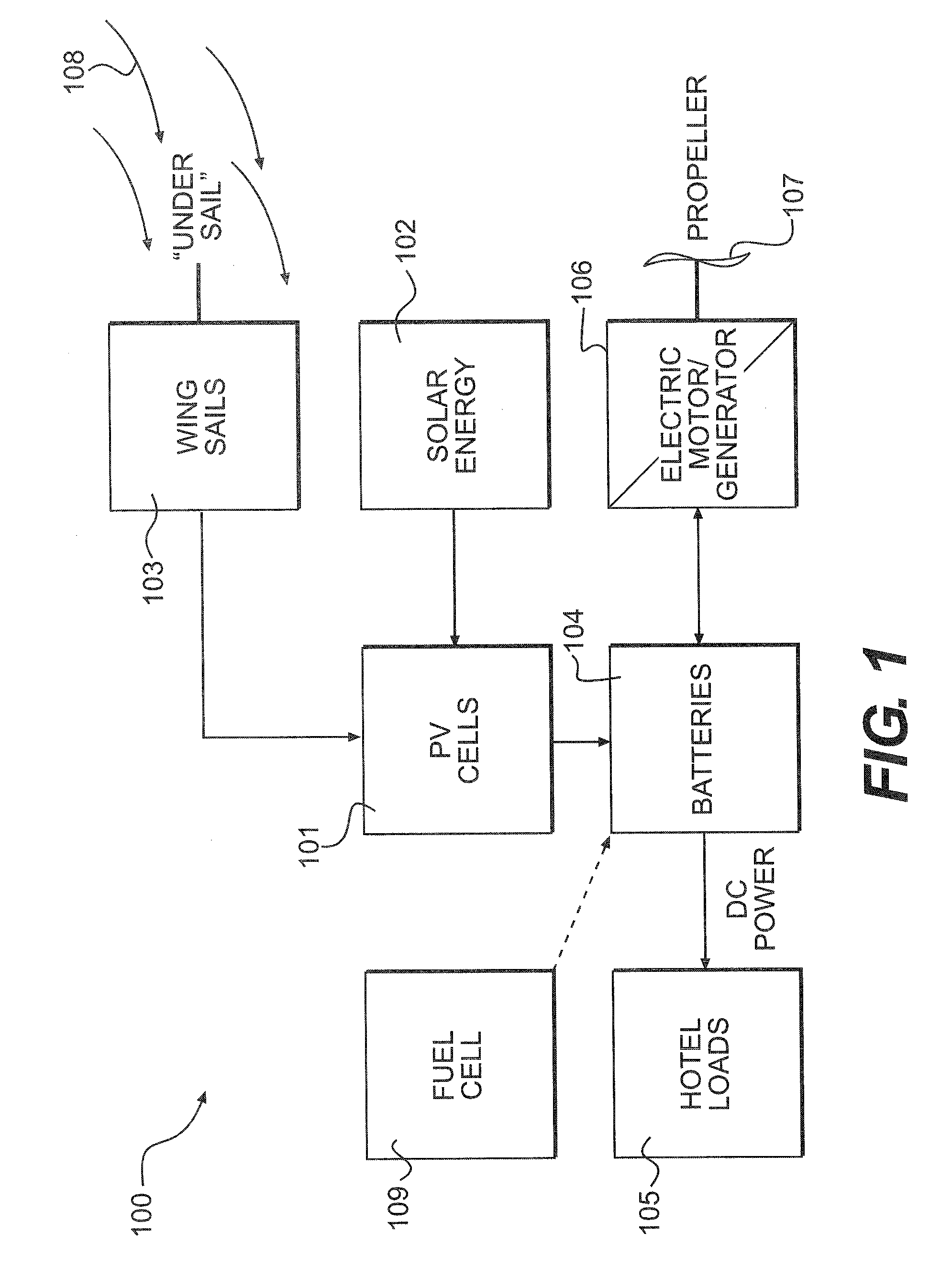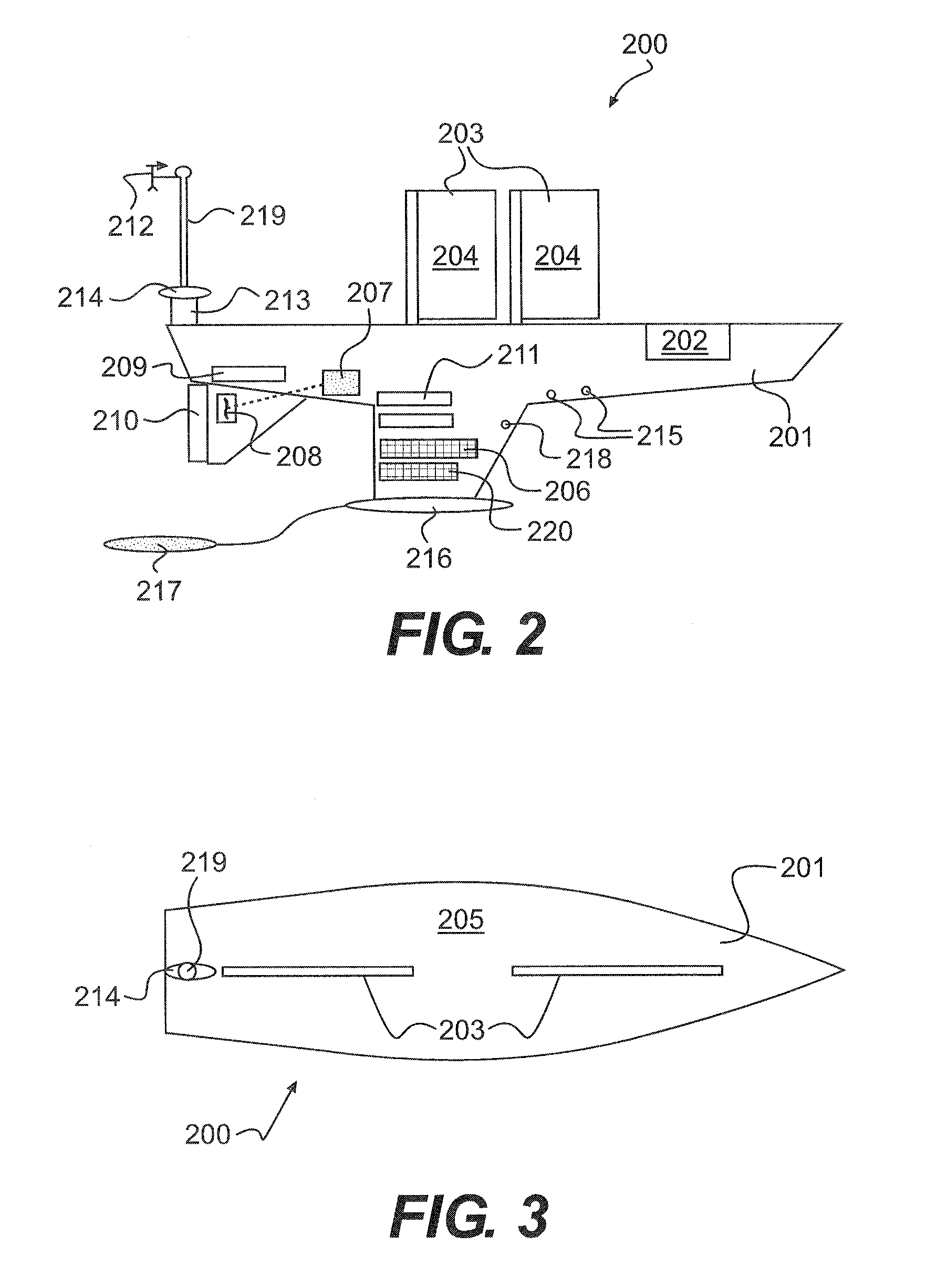Unmanned ocean vehicle
a technology of unmanned ocean vehicles and ocean vehicles, applied in the field of unmanned, autonomous, waterborne vehicles, can solve the problems of limited ability of conventional platforms such as ships and buoys to gather data and information in these applications, and increase the cost of manpower and operation, and achieve the effect of longer operating ranges
- Summary
- Abstract
- Description
- Claims
- Application Information
AI Technical Summary
Benefits of technology
Problems solved by technology
Method used
Image
Examples
first embodiment
[0040]Turning to FIGS. 2 and 3 there is represented a UOV 200 of the invention which is able to be constructed at relatively low cost. The vehicle includes an enclosed hull 201 constructed of fiberglass material, having a length of 3 to 15 meters (10-50 feet), a beam of about 1 to 10 meters (3-35 feet) and weighing in the region of 100 to 8000 kg (220 to 17600 pounds). The hull encloses a payload compartment 202 for a payload weighing in the region of 50 to 500 kg (110 to 11000 pounds). Hull extensions including a keel and a rudder (not shown)are retractable to facilitate storage and handling.
[0041]The UOV includes a hybrid propulsion system having two retracting wing sails 203 are attached to the hull 201 for collecting wind energy to propel the vehicle. Both the surface of the sails 204 and the upper surface of the hull or deck 205 include sections covered with photovoltaic cells. The photovoltaic cells convert ambient solar energy into electrical energy for supply to a battery ba...
second embodiment
[0044]In FIGS. 4 to 6 there is depicted a UOV 300 of the invention suited to stealth, surveillance and additional roles requiring submersible or submerged vehicle operation. The enclosed hull 301 is constructed of a carbon fibre composite material and has the general appearance of an aquatic animal, here a dolphin or porpoise. Accordingly the hull has a length of 1 to 10 meters (3-30 feet), a width of about 0.1 to 3 meters (0.5-9 feet) and a weight of 50 to 500 kg (110 to 1100 pounds). The enclosed hull 301 includes in internal payload bay 302 for accommodating a payload weight of 10 to 100 kg (22 to 220 pounds).
[0045]The UOV includes a hybrid propulsion system including an electric motor 303, a fuel cell 304, electrical storage cells such as a battery bank 305 and a photovoltaic array 306 for collecting solar energy. The PV array 306 is provided on the surface of a wing sail 308 which is attached to the hull 301. It is anticipated that a 1 m2 wing sail operating in a 18 knot trade ...
third embodiment
[0048]Turning to FIGS. 7 and 8, there is depicted a UOV 400 of the invention which is suited to higher speed delivery of a larger capacity payload. The vehicle has a hull assembly, which includes a central hull 401 and two floats 402 with respective outriggers 403, constructed of a composite material having an overall length of 8 to 20 meters (25-65 feet), a beam of 6 to 16 meters (20 to 50 feet) and a weight of 400 to 8000 kg (880-17600 pounds). A pair of wing sails 404 having photovoltaic cells 405 disposed thereon is provided on the central hull 401 to capture both wind and solar energy. Each wing sail 404 is attached to the hull such that it may be declined along or laterally of the hull assembly when not required for wind propulsion purposes. The declined position of the wing sails reduces the silhouette of the vehicle whilst optionally allowing collection of solar energy. Further photovoltaic cells 406 are mounted between the outriggers 403 to enhance the surface area availabl...
PUM
 Login to View More
Login to View More Abstract
Description
Claims
Application Information
 Login to View More
Login to View More - R&D
- Intellectual Property
- Life Sciences
- Materials
- Tech Scout
- Unparalleled Data Quality
- Higher Quality Content
- 60% Fewer Hallucinations
Browse by: Latest US Patents, China's latest patents, Technical Efficacy Thesaurus, Application Domain, Technology Topic, Popular Technical Reports.
© 2025 PatSnap. All rights reserved.Legal|Privacy policy|Modern Slavery Act Transparency Statement|Sitemap|About US| Contact US: help@patsnap.com



